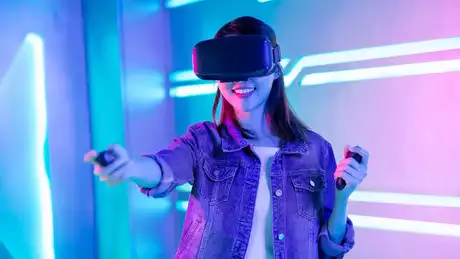India is no stranger to technological innovation, and the realm of virtual reality (VR), augmented reality (AR), and smart glasses is no exception. In recent years, there has been a significant surge in the adoption of VR/AR headsets and smart glasses in the country, transforming the way people experience digital content and interact with their surroundings. This article delves into the latest trends and developments in the immersive technology landscape in India.
The VR/AR Revolution in India:
- VR/AR adoption on the rise: India has witnessed a substantial increase in the adoption of VR and AR technologies across various sectors, including gaming, education, healthcare, and industrial training.
- Gaming industry’s VR leap: The gaming industry has been a key driver behind the popularity of VR headsets, with gamers seeking more immersive and interactive experiences.
- AR in education: Augmented reality has found its way into Indian classrooms, enhancing the learning experience by overlaying digital information onto the physical world.
Smart Glasses: The Future of Wearable Tech:
- Smart glasses gaining traction: Smart glasses, which integrate augmented reality into eyewear, are making waves in India. Companies like Google, Apple, and local startups are developing cutting-edge smart glasses.
- Applications beyond Google Glass: While Google Glass popularized the concept of smart glasses, Indian companies are exploring applications in fields such as telemedicine, logistics, and remote assistance.
Indian Innovations in VR/AR:
- Local startups leading the way: Indian startups are at the forefront of VR/AR innovation, creating solutions that cater to India’s unique needs and challenges.
- Healthcare breakthroughs: VR is being used for therapy and pain management, while AR is assisting surgeons with precise medical procedures.
- Connectivity hurdles: Reliable high-speed internet remains a challenge in rural areas, limiting the widespread adoption of VR/AR technologies.
- Government initiatives: The Indian government has initiated programs to support the growth of the AR/VR industry, including research and development grants and startup incubation centers.
Conclusion:
The immersive technology landscape in India is evolving rapidly, with VR/AR headsets and smart glasses becoming integral parts of various industries. As technology continues to advance and accessibility improves, India is poised to become a hub for innovative VR/AR solutions.
Key Takeaways:
- VR and AR adoption is increasing across multiple sectors in India.
- Smart glasses are making strides in fields like healthcare and logistics.
- Indian startups are driving innovation in VR/AR.
- Connectivity issues remain a hurdle to widespread adoption.
- Government initiatives are supporting the growth of the immersive tech industry in India.







